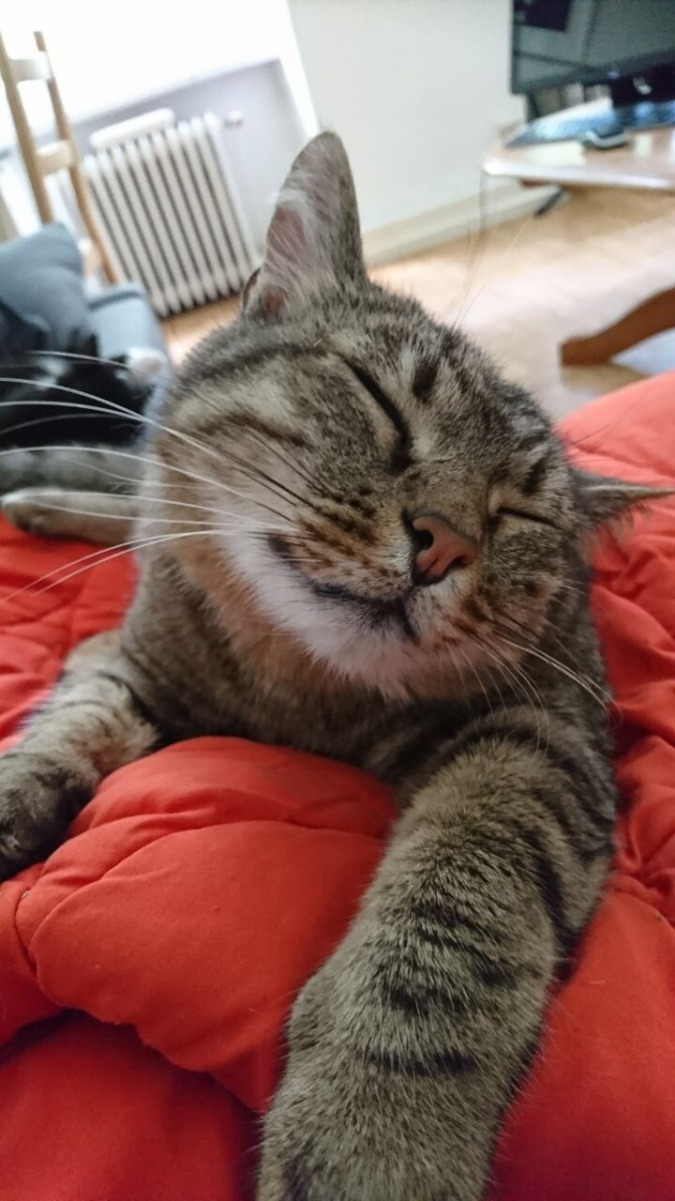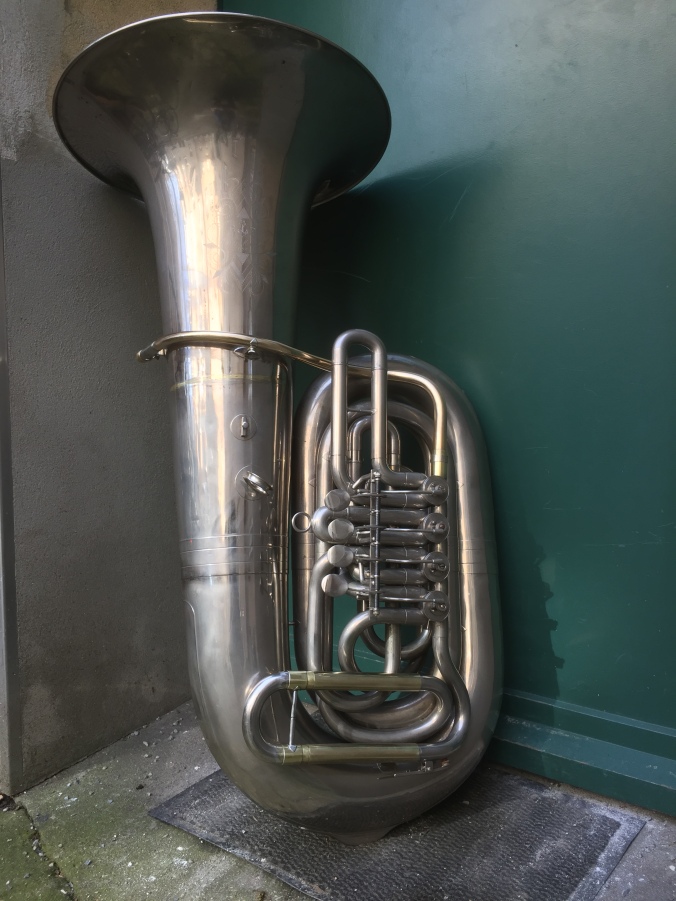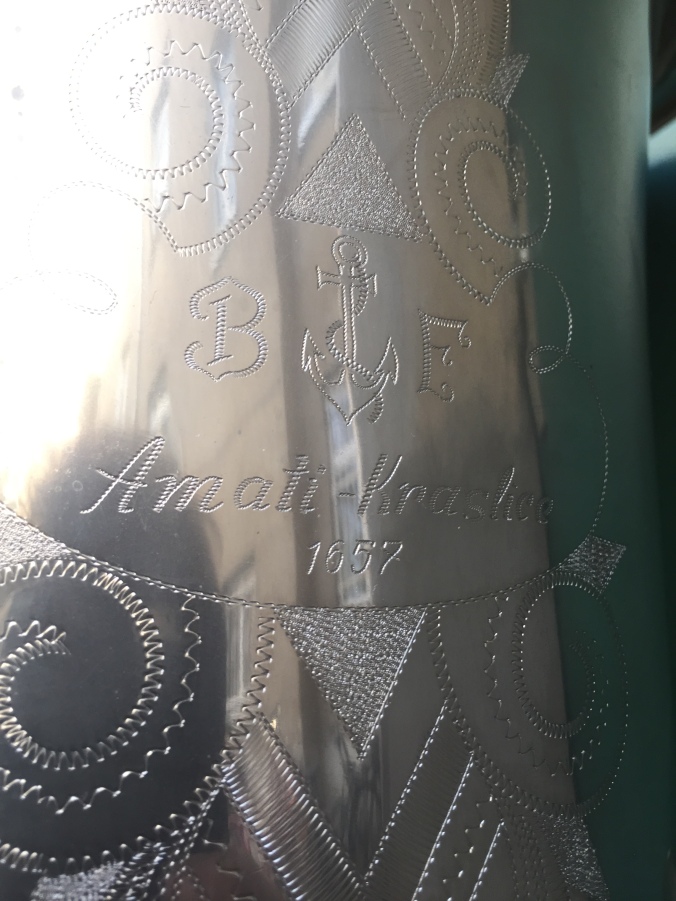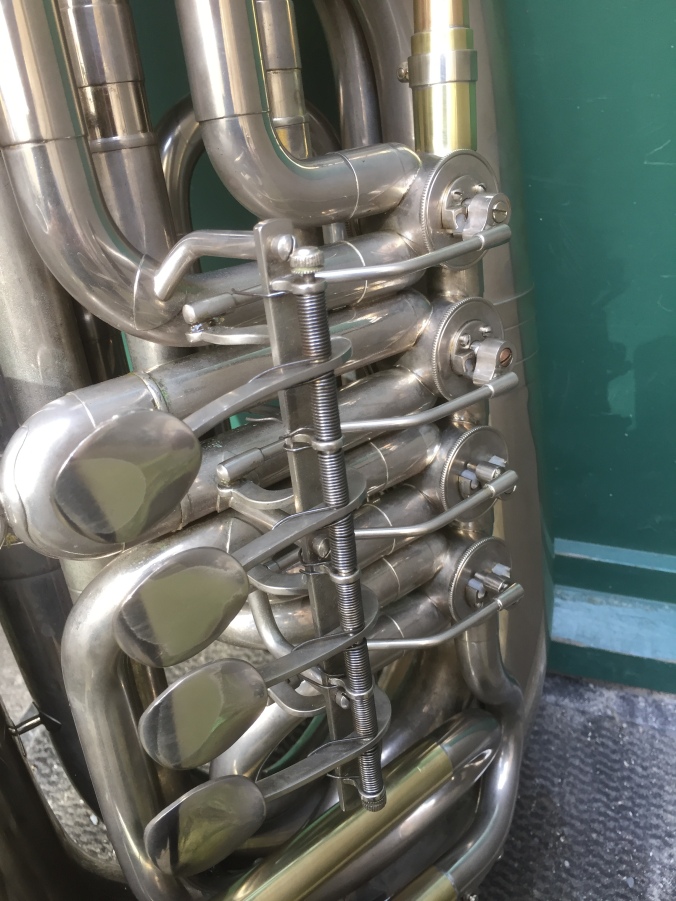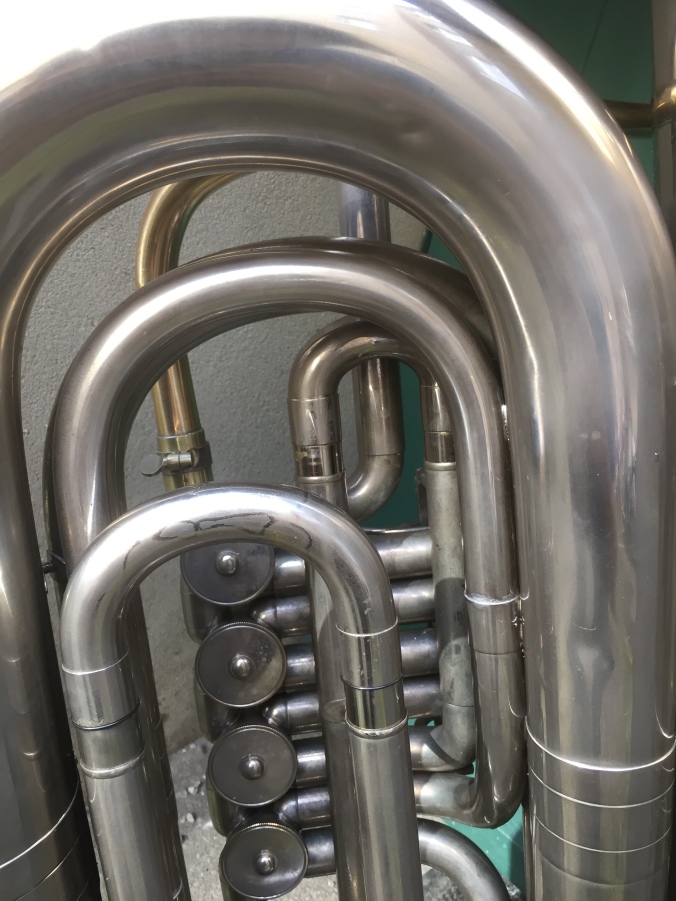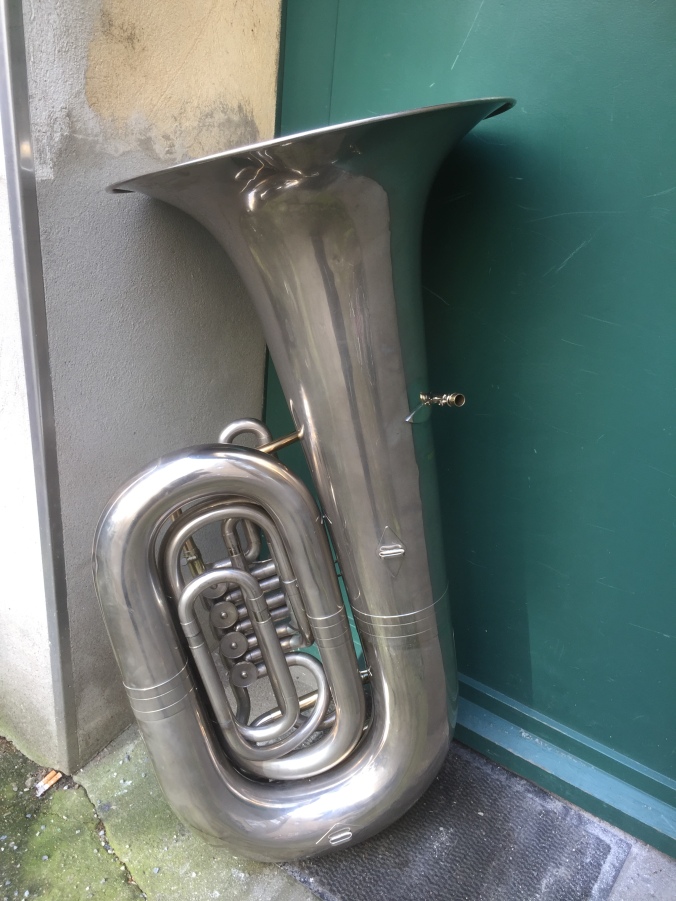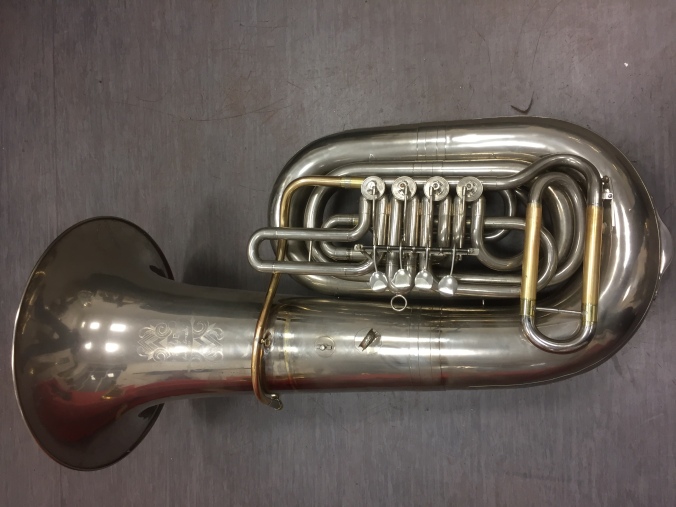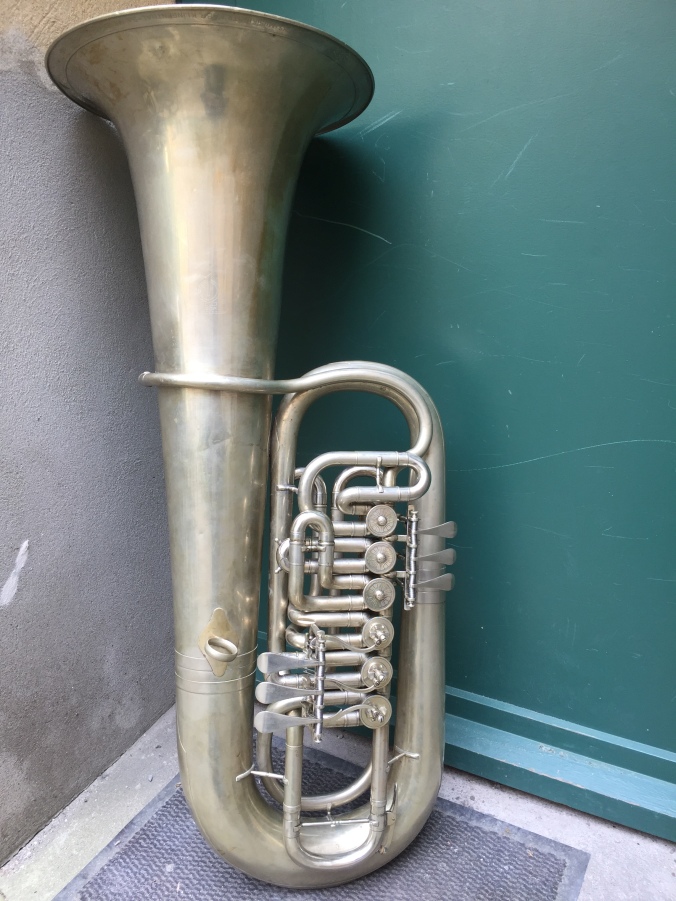
In 1948 most of Germany lay in ruins. This Youtube video from the Britsh Pathe channel shows a bit of how Berlin looked at the time.
By 1948, most citizens just wanted to get back to some semblance of normal life, instrument makers included. To add to the perspective, in 1947 Markneukirchen, then under Soviet control, experienced borderline starvation and a – 20C winter.
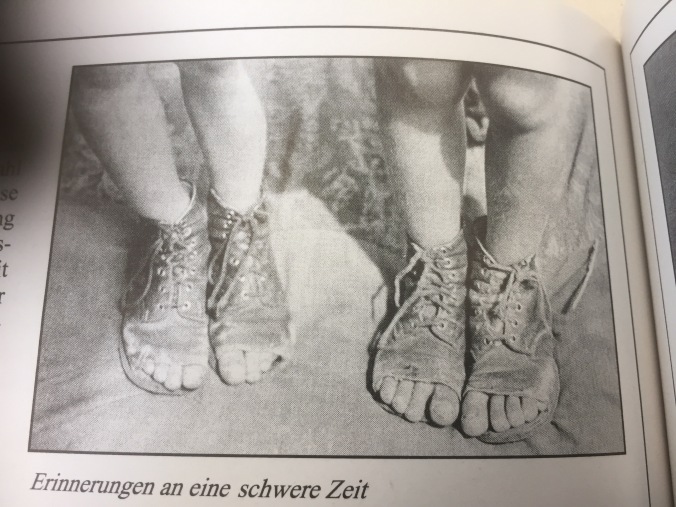
Memory of a difficult time. From the book, ‘Markneukirchener Stadtgeschickte 1933-1948’
Possessing an incredible wealth of knowledge and metalforming technique from their prewar days, the now DDR instrument makers, now under the name “VEB”, rolled up their sleeves and got back to doing what they did best.
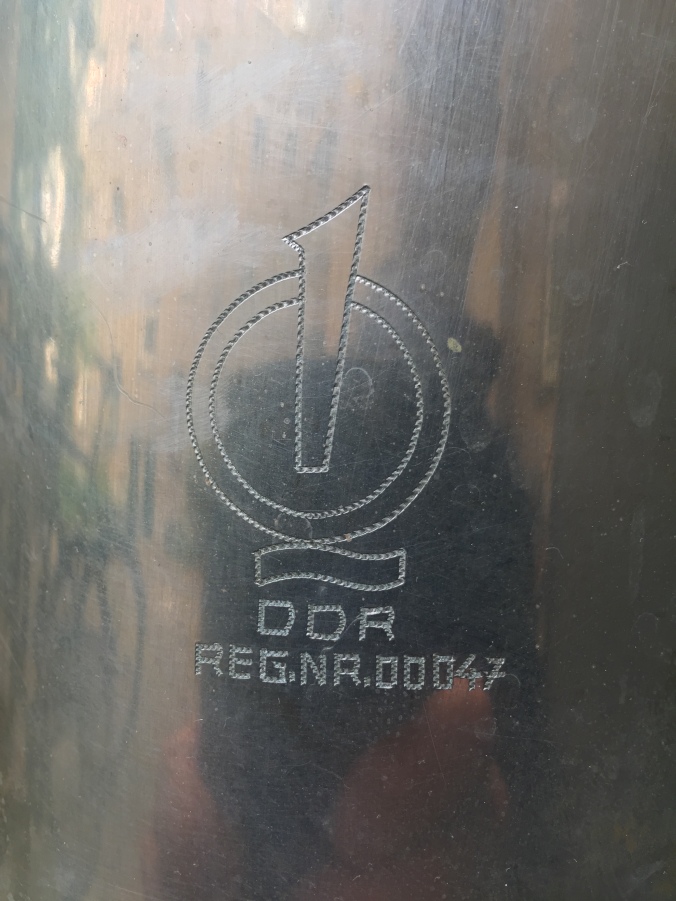
not the most pleasant font, but it does get the point across…
Based on the designs of the former Hess (and earlier Alexander) designer Meister Andreas Grönlein drew upon his larger F-Tuba design as the template to create this Wiener F-Tuba.
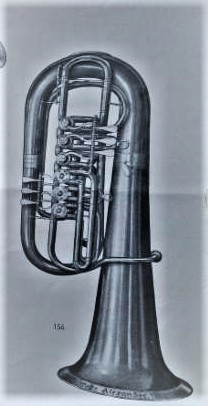
lovely tuba…Alexander 156 F-Tuba
Based on the Alexander 156 Wiener F-Tuba (or perhaps the other way around), Grönlein’s design was high point of Deutsche F-Tubas until the Symphonie F came along about 15 years later, however even to this day the modern Alexander 157 shares quite a bit of the DNA.

modern Alexander 157 F-Tuba
It’s not yet completely clear for whom this tuba was made, but it bears the marks of an exhibition instrument(Ausstellungsstuck) with its special engraving not to mention being constructed completely of nickelsilver. Yes you heard me, this tuba is 100% nickelsilver/Neusilber. With its wiener fingering system and lack of carriage rings, this tuba was likely marketed as a top shelf orchestra F-Baßtuba.
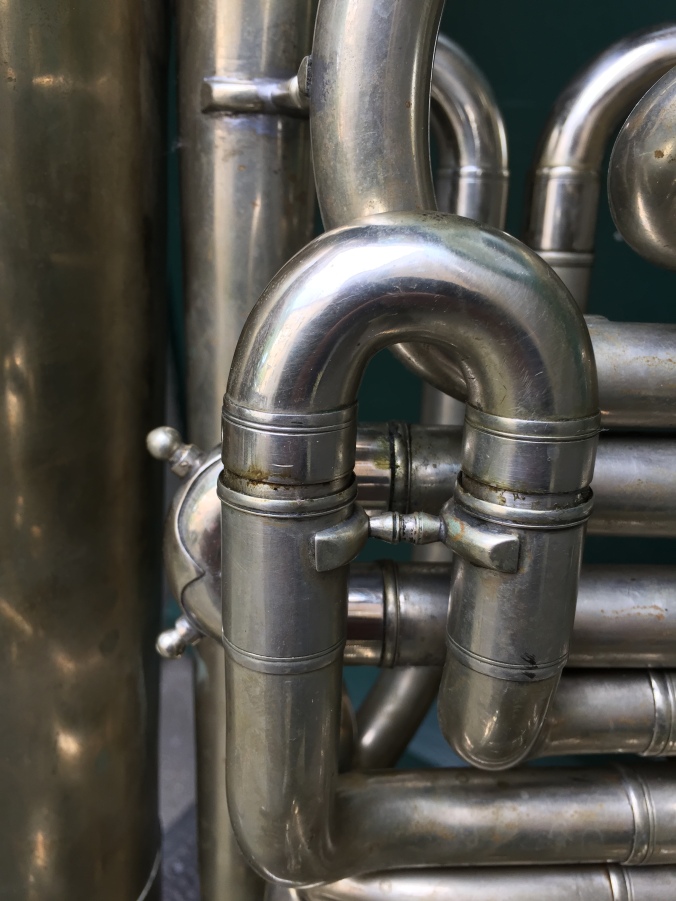
For those who are not instrument makers, building any brass instrument in nickelsilver much less a tuba, is not a task for the faint of heart. Modern makers such as Conn and Holton developed a system for bending their nickelsilver horn bells, but to make tuba bows and crooks all bent in lead is an exercise in patience. Very often you end up having to repair the bows due to cracking. Not fun at all…very labor intensive.

oops…
It’s interesting to note, earlier designs of Wiener tubas have the valves 1-3 and 4-6 mounted offset to each other with a long connecting pipe. Later versions such as the Alex or VEB use a normal inline valve block instead.
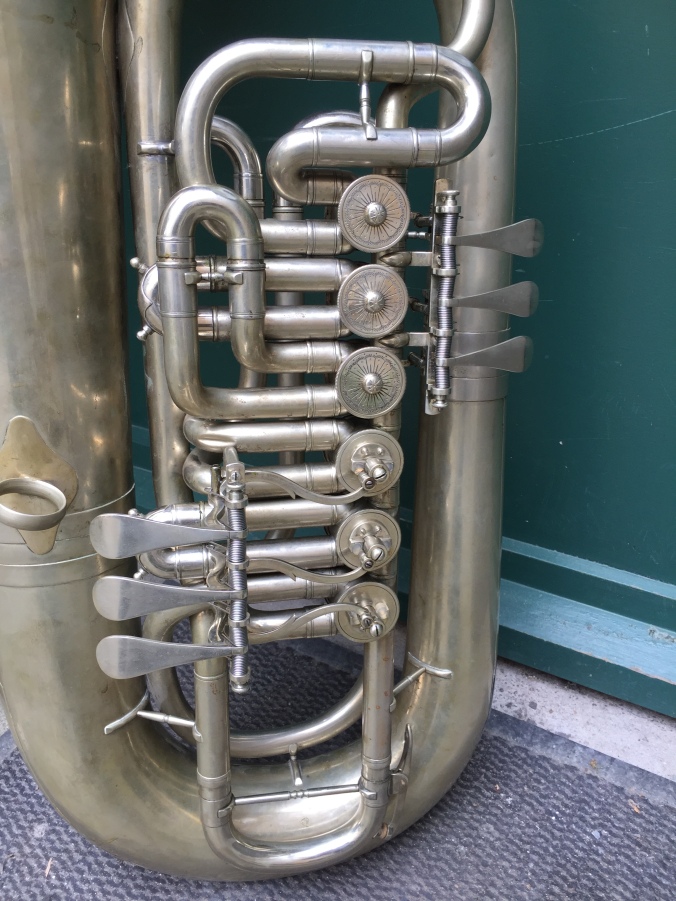
everyone of those crooks are bent in lead…I can’t imagine the number of hours it took.
The closer you look, there is even more to see. This tuba has a lot of eye candy! The engraving on the valve caps is quite lovely.
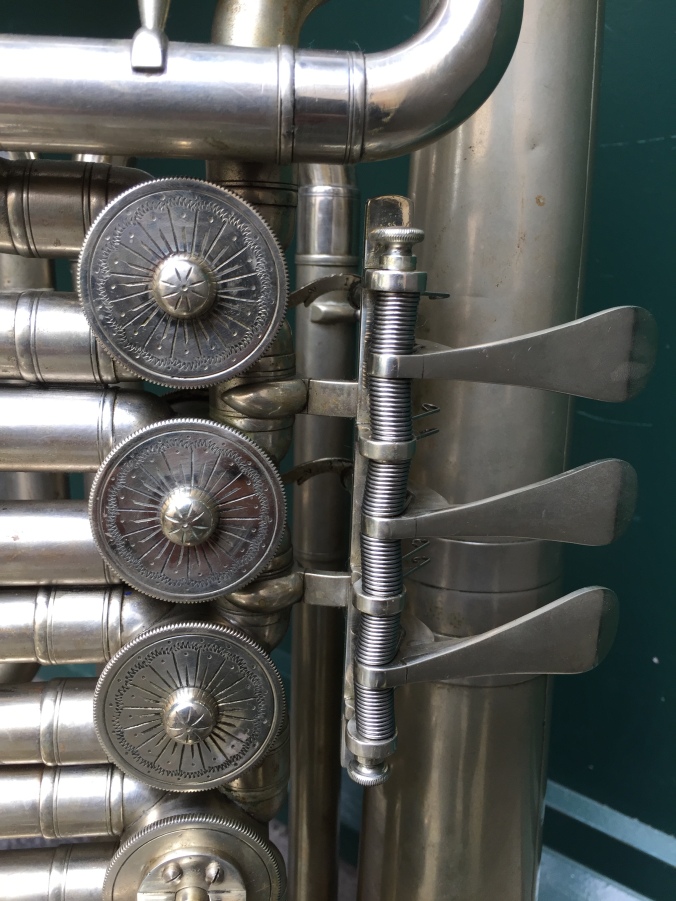 When the tuba first arrived to the shop, it was suffering from a few small leaks in the leadpipe, but these issues were quickly found and dealt with.
When the tuba first arrived to the shop, it was suffering from a few small leaks in the leadpipe, but these issues were quickly found and dealt with.
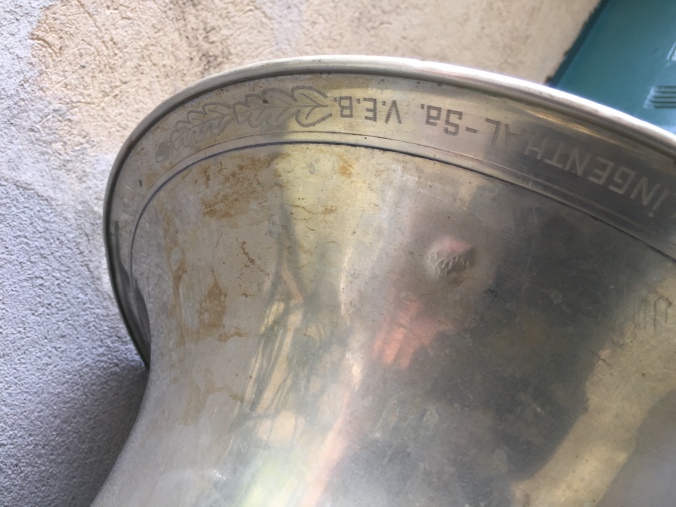
V.E.B. Klingenthal in Saxon.
The tuba has a lovely open OOO sound. The nickelsilver doesn’t resonate as easily as brass or goldbrass and does take more effort to get the sound to project. However it is very difficult to ‘break’ the sound. I’ve tried a similar tuba but in goldbrass and this one can play much louder with a purer sound. It does feel similar to its Alexander cousins although intonation is noticeable better than the Alex F. The only thing I would change or modify would be to lengthen the 3rd valve slide to a flat whole step instead of a short whole step, but this is a personal preference.
For those of you curious, there were only 3 of these nickelsilver F tubas ever made and 1 BBb also in nickelsilver. The BBb apparently went to the USA so if anyone has seen this tuba or perhaps another F tuba like this one, please write me.
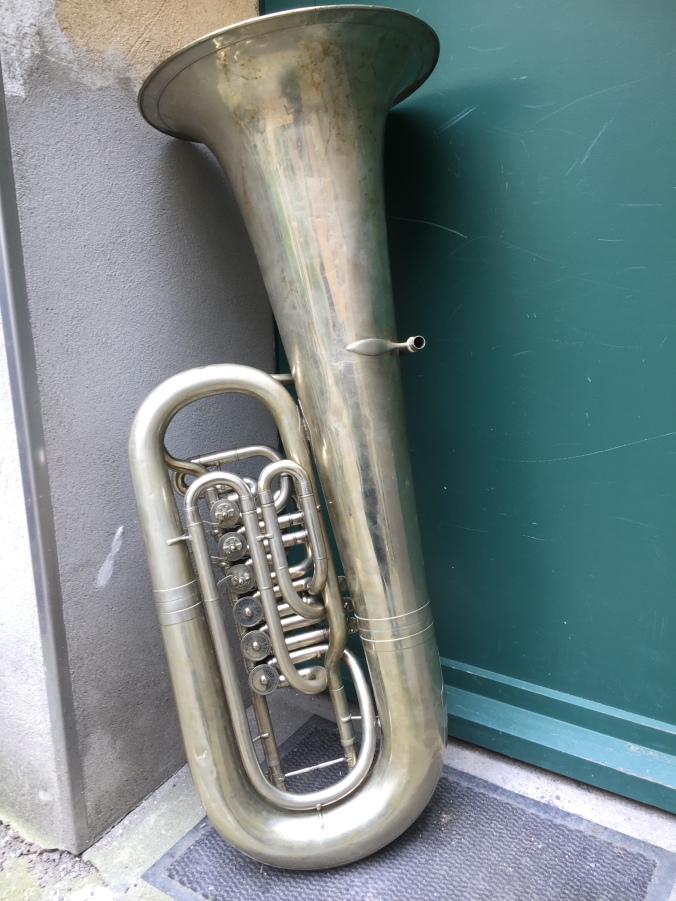
driver’s view
Specifications:
1948 VEB F-Tuba Wiener Model in Nickelsilver
Height: 102cm
Bell diameter: 38cm, triangle seam design
Valves: Wiener configuration 6 valves, 18mm bore
Weight: 6.70kg
